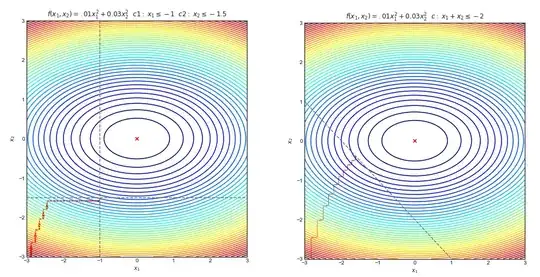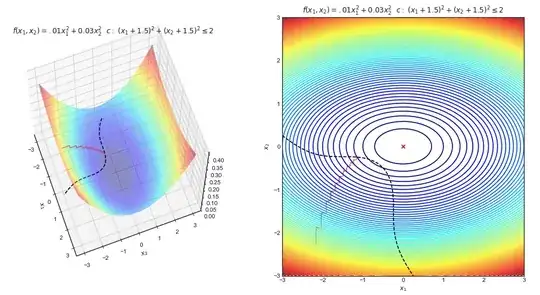The bland answer is that to solve constrained optimization problems, you need an algorithm that knows and uses the constraints - simply applying unconstrained optimization algorithms will not work.
Box constraints
Taking the algorithm you described in your answer, it will ''not work'' for box constraints, depending on the value of the step-size $\alpha$;
Take $f(x) = x$, $x \leq 0.9$, start at $x_0 = 0$ with a step-size $\alpha=1$.
The only step available does not satisfy the constraint.
You can decrease $\alpha$ to make it ''work'', but you can always find a function/starting point for which it does not work; the correct step-size depends on the interaction between the function and the constraints and thus require solving a constrained optimization problem to set it.
If you are able to solve the subproblem of finding the minimum along the dimension you are optimizing while respecting the constraint, i.e. taking steps
$$x_i^{k+1} = \arg \min_{x_i \in C} f(x_1^{k}, ..., x_{i-1}^{k}, x_i, x_{i+1}^{k}, ..., x_D^{k}),$$
you can solve box constraints, as in your first reference.
Linear constraints
However, this approach will choke on linear constraints.
Take $f(x,y) = x^2 + y^2$, with $x + y < -1$. The minimum is at $(-0.5,-0.5)$, but if you start at $(-1,0)$ you can not make progress on $x$ (not allowed to be bigger than $-1$) nor $y$ (is at the minimum given $x = -1$).
Your second ref. is able to get around that issue by considering block coordinate updates; changing $k$ coordinates at each iteration makes it possible to get around linear constraints involving less than $k$ variable at a time.
Non-linear constraints
Your non-linear constraint is also non convex; start at $(0,-3)$ and the algorithm would converge to $(0, -2.9...)$, not at the minimum.
What to do
You can either use a constrained optimization algorithm (Frank-Wolfe comes to mind) or re-parametrize your problem so that it incorporates the constraints; if you want to find the minimum of $f(x), x \geq 0$, try to find the minimum of $g(y) = f(y^2), y \in \mathbb{R}$

